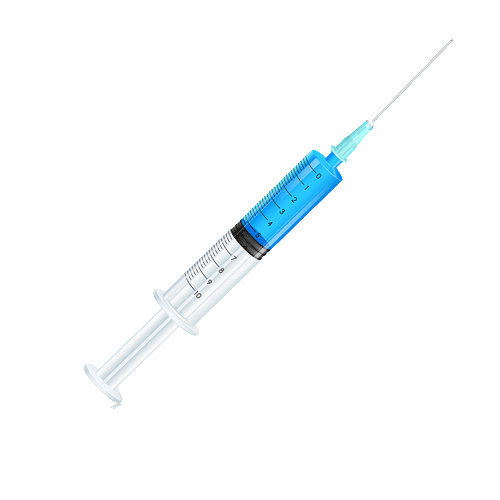This website uses cookies so that we can provide you with the best user experience possible. Cookie information is stored in your browser and performs functions such as recognising you when you return to our website and helping our team to understand which sections of the website you find most interesting and useful.
Have You Experienced Medical Negligence Through Dermal filler?
We can help you today



Medical negligence/Cosmetic surgery claims/ Dermal filler compensation claims

Dermal filler compensation claims
Dermal fillers (including lip fillers) are injectable treatments used to fill lines and wrinkles. They are also used to add volume to certain areas of the face such as the cheeks or the lips.
Most of the time, dermal filler treatments go smoothly, but sometimes there can be complications. If you have sustained an injury associated with dermal fillers or received negligent treatment, you may be entitled to claim compensation.
At First Personal Injury, our team of medical negligence lawyers are well-versed in dermal filler claims and are ready to help you.
Get in touch with us today on 0800 808 9740 or contact us via this website to learn more.
THE DERMAL FILLER PROCESS
Dermal fillers are completely cosmetic and are generally not available on the NHS. Usually, the procedure is performed privately by a dermatologist in a cosmetic clinic or salon.
The dermal fillers procedure involves injecting a gel into different parts of the face: around the eye, cheeks, mouth, and jawline. As you would expect, lip fillers are administered directly into the lips. Usually, fillers contain hyaluronic acid, but they can also contain hydroxyapatite (CaHA), collagen, and poly-l-lactic acid (PLLA)
Fillers work to restore lost volume to the face and lips. They are generally not permanent; most fillers will last between six to 18 months.
Types of fillers
There are a number of different types of fillers, but the most common types are outlined below:
- Permanent/non-resorbable fillers – can last for over ten years but are rarely used
- Lip fillers – used to increase the plumpness or the lips
- Cheek fillers – used to increase volume
- Anti-wrinkle fillers – fillers used in areas such as around the eyes and the cheeks, to fill out fine lines
- Nose bridge fillers – used to correct asymmetry, a bump on the nose or a misshapen nose. This type of filler is sometimes used as a precursor to the traditional rhinoplasty.
Each type of filler is used to achieve a specific effect. For instance, hyaluronic acid fillers help to maintain shape, even out depressions in the skin and provide hydration. At the same time, the material in each type of different filler has its own specific risks. When they are injected into the body, there can sometimes be complications.
Dermal fillers and medical negligence
All medical professionals, dermatologists and beauty therapists have a duty of care to ensure your safety and wellbeing while you are in their care. While most people who have dermal and lip fillers are pleased with the result, on occasion, there can be difficulties. Unfortunately, there are no regulations in place to control who is able to inject filler (or provide botox treatments). If the person administering fillers is untrained and not careful, there’s a risk of damage, infection, and in the most serious cases, blocked arteries, leading to tissue death and scarring.
Because of the risks involved, before you have any kind of injectable treatment, it is important that you do your research and make sure you go to a qualified practitioner.
In a consultation before your treatment, you should be informed of the risks involved, what will occur during the procedure and what aftercare is involved.
Not everyone is happy with the results following a filler procedure, but this does not necessarily mean you have experienced medical negligence. However, if a beautician or dermatologist has acted carelessly or has failed to uphold their duty of care and you have sustained an injury, you may have grounds for compensation.
If you are thinking of making a claim, you should contact a specialist lawyer who will be able to assess your case. They will consider a number of factors as the basis for your case including the extent of your injury and trauma, whether it could have been avoided and who’s responsible.
COMMON DERMAL FILLER COMPLICATIONS
Afterwards, the affected area may be slightly red, sore and swollen, however, any swelling or bruising should settle down in a few days.
There are a range of injuries which might occur following a filler procedure including:
- Scarring
- Excessive swelling
- Infection
- Continued rashes or itchiness
- The filler moving to another part of the body
- A lumpy and unclear appearance under the skin which might need to be treated by medicine or surgery
- Blocked blood vessels causing the death of facial tissue or even permanent blindness
If you have had lip fillers or dermal fillers and you’re unhappy with the results, you should speak to the clinic where you were treated. Following the procedure, you should follow the aftercare advice you were given beforehand.
If there are any complications requiring medical attention, you should visit your GP or local A&E department.
In the event that you believe you have been a victim of negligence, you should speak to a solicitor that specialises in medical negligence cases such as dermal filler claims.
DERMAL FILLERS AND MEDICAL NEGLIGENCE
The medical negligence team at First Personal Injury are very experienced in this area and are ready to help you.
To begin with, we will need to take some initial details from you to learn about your procedure and injuries.
Please call us today on 0800 808 9740 or get in touch online for a no-obligation conversation about your circumstances.
Free initial Discussion - Call Now!
Get in touch with First Personal Injury on 0800 808 9740 or through our online claim form.
